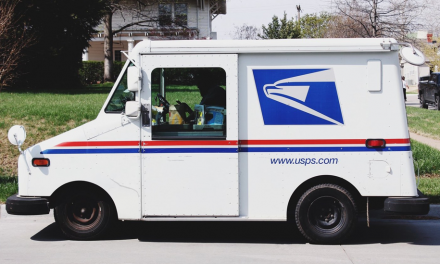
USPS sees climate change emissions increase in “challenging” year
The cash-strapped US Postal Service struggled to improve its environmental impacts last year, as facility energy use rose 5% and fuel use increased more than 2%. A growth in the number of addresses USPS serves has outpaced the improvement in its vehicle efficiency, it said.
In its latest annual Sustainability Report, the Postal Service recorded a less than one percentage point increase in its greenhouse gas emissions during the 2011 fiscal year.
The Postal Service emitted 12.39m metric tonnes of carbon dioxide equivalents last year, up 80,000 tonnes on the year before.
Thomas G Day, the chief sustainability officer, said the Postal Service had “many challenges” during a year of “unprecedented change”. USPS was attempting dramatic cuts in operating costs as it recorded a $5.07bn loss during the year.
Despite the difficulties, the USPS report suggests it is still on target to reach its 2015 greenhouse gas emission targets and facility energy use reduction targets.
But, it is behind target on fuel consumption, recycling and use of environmentally preferable products.
Against its 2008 baseline year, the Postal Service has cut greenhouse gas emissions by 7.4% and facility energy use by 25.6%. But fuel use has increased 8.3% from a 2005 baseline.
Day said: “Our ‘leaner, greener, smarter and faster’ conservation efforts have placed us more than one third of the way to our goal and when the Postal Service is more efficient, everyone benefits.”
Fuel use
Work to reduce fuel use has included improving delivery route efficiency and trialling alternative fuel vehicles with a view to the need to replace much of the USPS vehicle fleet, which is approaching 25 years in age using vehicles designed to run for about 17 years.
But, growth in the US population and number of addresses to be served by USPS has made it more difficult to cut fuel use.
Route optimisation activities in 2011 eliminated more than 6,800 delivery routes and reduced the fleet size by 1,700 vehicles, but during the year the Postal Service said it saw more than 735,000 new delivery points added to the network.
Fuel use increased by 6.8m gallons of gasoline in the USPS-owned fleet during 2011.
Day said: “We continue our efforts to reduce the growth in fuel use by optimising our delivery routes and efficient use of our vehicle fleet. However, the number of delivery points we serve continues to grow even during these tough economic times. The net result is that delivery growth is outpacing our ability to improve efficiency.”
Facility energy use
The Postal Service spent $577m on energy costs in 2011, with its 33,000 buildings using as much power as nearly 270,000 homes.
More than 1,000 energy reduction projects started in 2011 are expected to cut energy costs by $22m a year.
Day said: “Our progress toward reducing facility energy use 30% by 2015 continues to exceed our annual targets despite a slight increase in facility energy use this year.”
Limited resources
In his comments on the report, Postmaster General Patrick Donahoe noted that the Postal Service has more than 213,000 vehicles to run its daily services.
“The Postal Service is a big organisation, and we’re working hard to reduce our impact on the planet we all share,” he said.
With its limited resources, the Postal Service has been making environmental investments only where there is a short payback and high return.
It is using more than 400 “Lean Green Teams” to help encourage low-cost and no-cost ways to conserve resources and reduce costs. Data and IT systems have been consolidated into two locations – Eagan, Minnesota, and San Mateo, California.
And, delivery operations are being made more sustainable with the use of more walking routes and nearly 75,000 “park and loop” routes where carriers deliver mail on foot once arriving in their neighbourhoods.
Some of the biggest wins, however, in terms of environmental impact numbers look set to come from the major facility closures and network consolidation planned as the Postal Service looks to reduce its annual budget by more than $20bn over the next four years.












